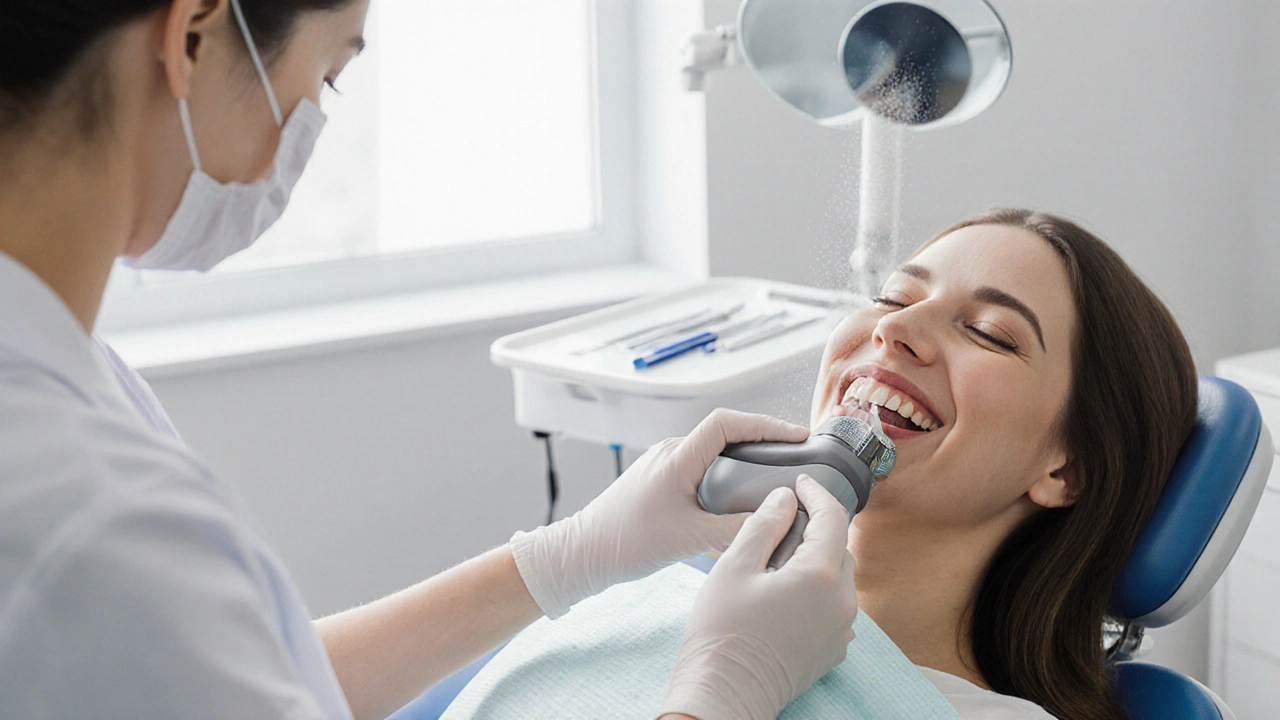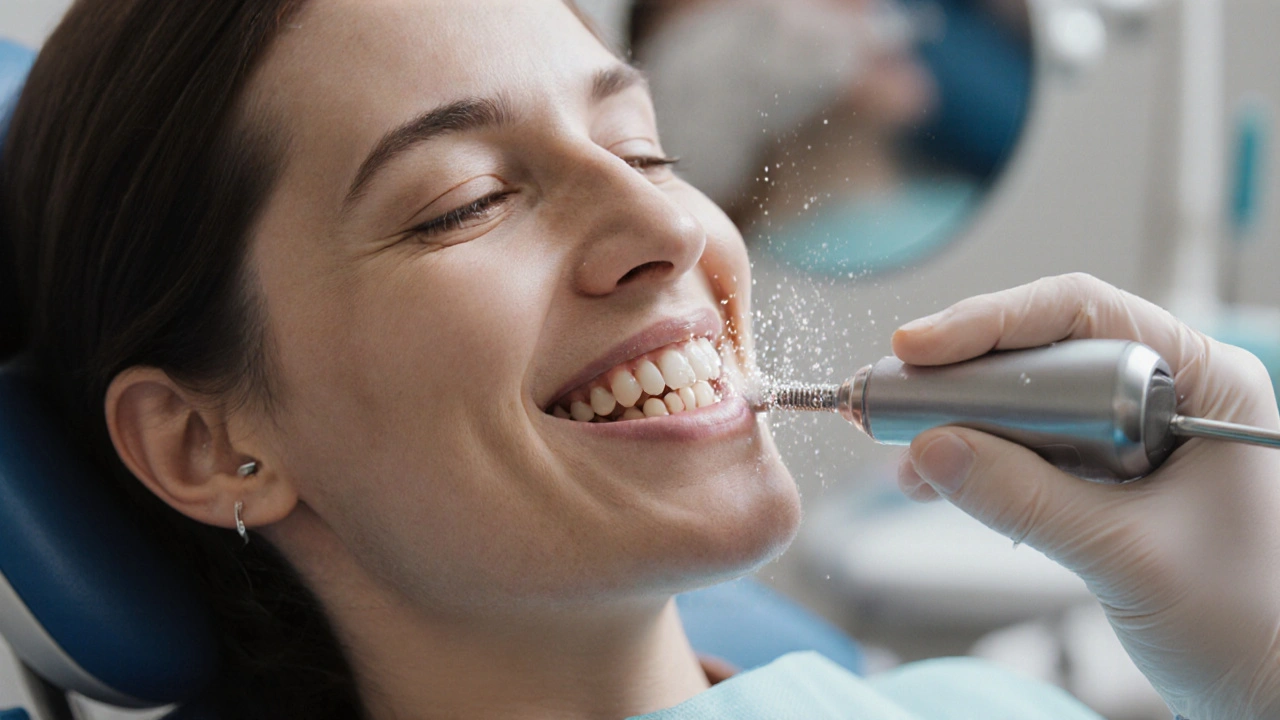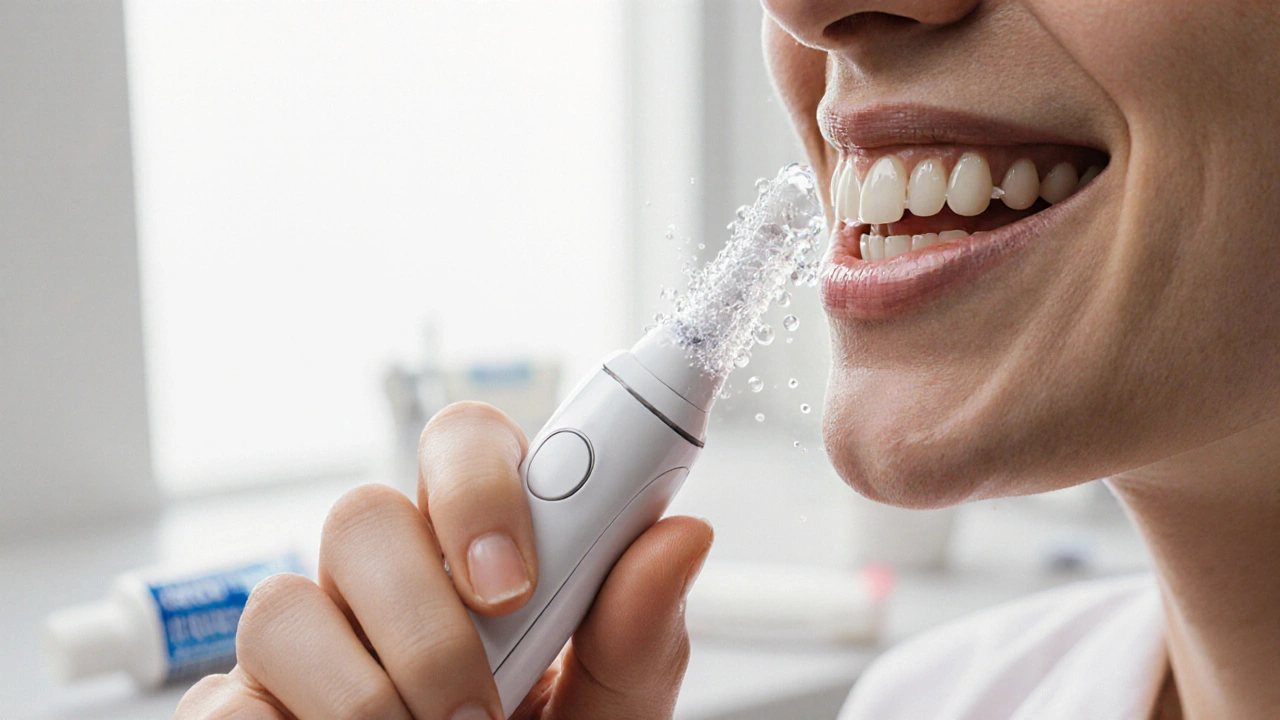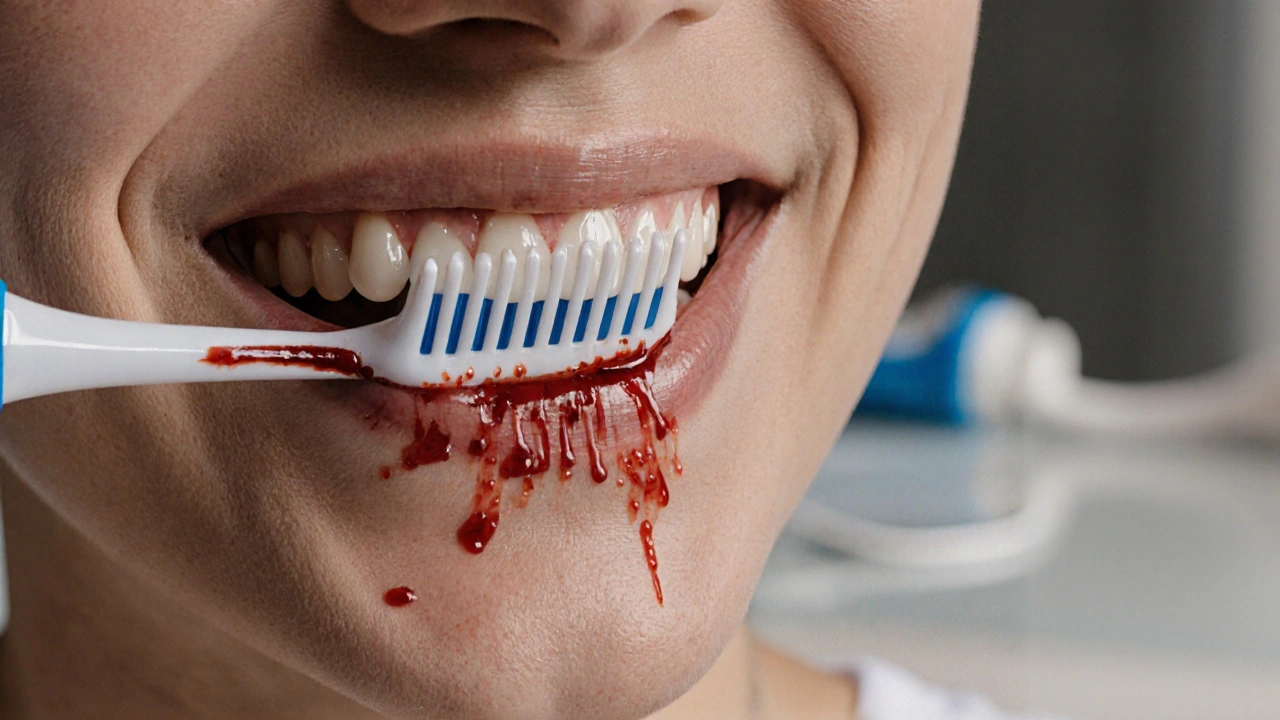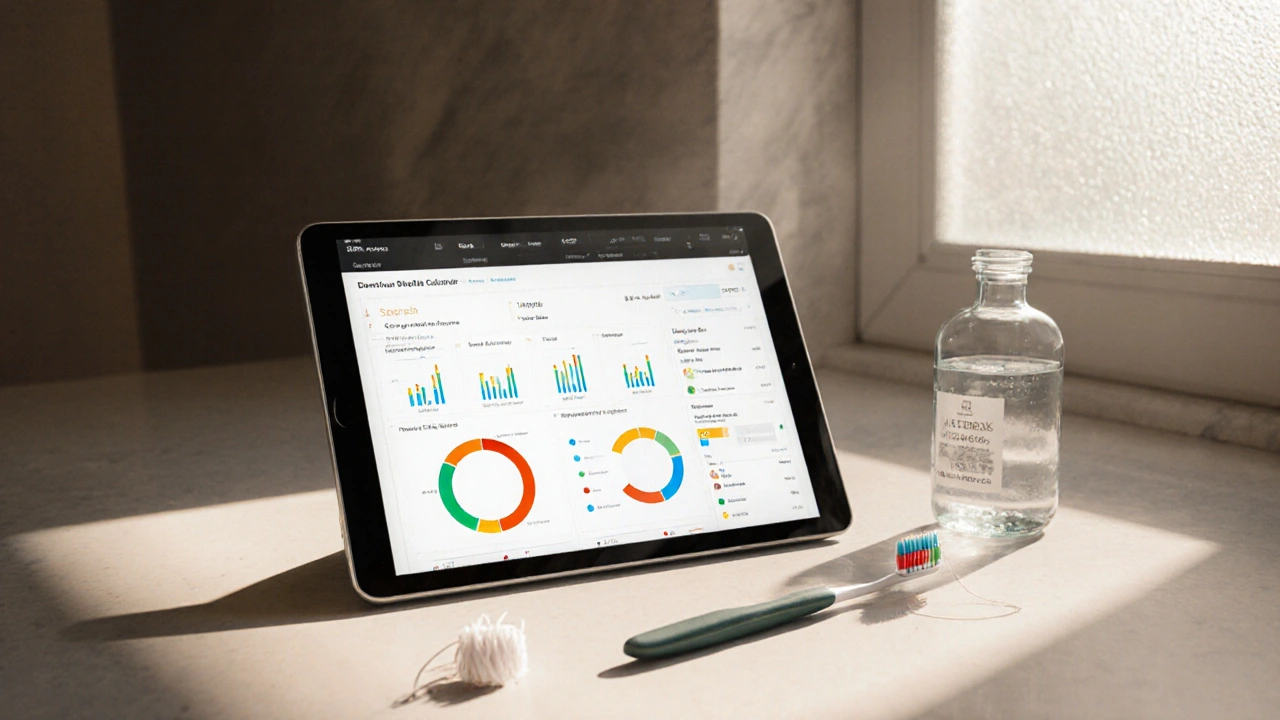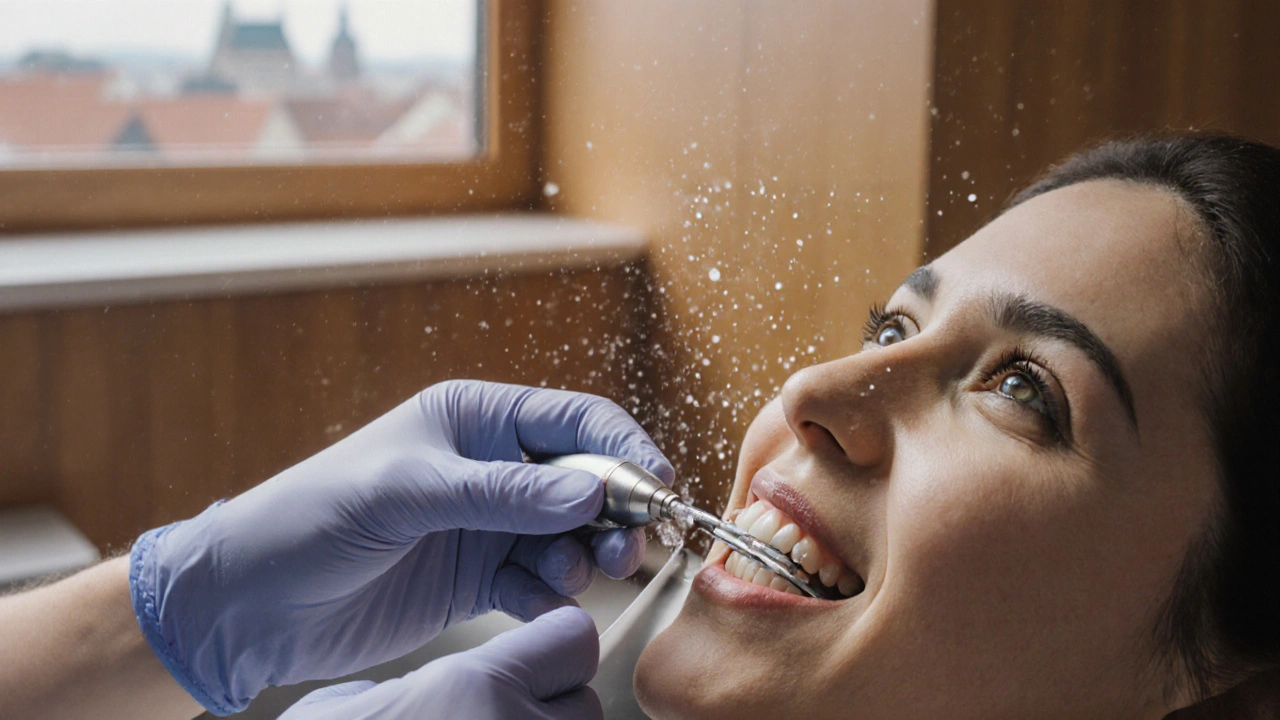- Zničené zuby po rovnátkách: Příčiny a jak to zastavit Dec 1, 2025
- Nejlepší profesionální dentální zrcátka 2025 - výběr a recenze Oct 20, 2025
- Estetické fazety: Jak získat dokonalý úsměv Oct 10, 2025
- Ultrasonický čistič zubů: Co říkají vědci o efektivitě a bezpečnosti Nov 18, 2025
- Jak zubní implantáty zlepšují kvalitu života: Úsměv bez kompromisů Mar 6, 2024
Zubní kámen – co to je a proč ho nechcete
When talking about zubní kámen, tvrdá vrstva, která se vytvoří z usazeného zubního plaku a následně mineralizuje na povrchu zubů a dásní. Also known as tartar, it can cause gum inflammation if not removed. A similar but softer buildup is zubní plak, lepkavá biofilmová vrstva složená z bakterií, zbytků jídla a slin. Both entities are closely linked to ústní hygiena, soubor každodenních návyků jako čištění zubů, používání nití a ústní vody. A proper hygiene routine reduces the risk of mineralization, which otherwise leads to tartar formation.
Příčiny a rizika spojená se zubním kamenem
Every day, bacteria in the plaque feed on sugars and produce acids. When you skip brushing or use a soft toothbrush, the plaque isn’t removed and begins to harden. This process is called zubní kámen formation. The longer the plaque stays, the thicker the tartar layer becomes, making it harder to clean. If you ignore it, the tartar can irritate gums, cause gum recession, and even lead to periodontitis. The link between poor oral hygiene and gum disease is a classic cause‑effect relationship.
To stop this, many dentists recommend regular kyretáž, profesionální odstranění zubního kamene pomocí ultrazvukových nástrojů nebo ručních skalpelů. Kyretáž not only removes existing tartar but also smooths tooth surfaces, making it harder for plaque to adherе again. This preventive step is especially important for patients with a history of gum problems.
Besides professional cleaning, everyday practices matter. Brushing twice daily with a fluoride toothpaste, flossing, and rinsing with an antibacterial mouthwash create a barrier against plaque buildup. Some people use enamel‑friendly chewing gum after meals to increase saliva flow, which naturally washes away food particles and weakens plaque formation.
A common myth is that tartar can be scraped away at home with a toothpick. That’s risky – improper tools can damage enamel or gums, creating entry points for bacteria. Instead, rely on dental professionals for safe removal and follow their advice on home care. By combining regular professional cleanings with diligent daily hygiene, you keep both plaque and tartar at bay.
In the list below you’ll find articles that dive deeper into each aspect: how plaque turns into tartar, the best preventive routines, what to expect during a kyretáž, and answers to common questions. Whether you’re looking for quick tips or detailed explanations, the collection gives you practical information to keep your smile healthy and free of zubní kámen.
Co je to pískování zubů a proč ho dentista dělá?
- Veronika Skalická
- Nov 26, 2025
Pískování zubů je bezbolestná a účinná metoda, jak odstranit zubní kámen a barvení, které nejdou vyčistit doma. Zjistěte, kdy je potřeba, jak často dělat a jak se připravit.
Proč jít na dentální hygienu? Proč to není jen o čistých zubech
- Veronika Skalická
- Nov 24, 2025
Dentální hygiena není jen o čistých zubech - je to klíč k prevenci zánětů, ztrátě zubů a problémům s celkovým zdravím. Pravidelná návštěva hygienistky zabraňuje drahým léčbám a udržuje zuby i dásně zdravé.
Ultrasonický čistič zubů: Co říkají vědci o efektivitě a bezpečnosti
- Veronika Skalická
- Nov 18, 2025
Ultrasonický čistič zubů skutečně funguje lépe než kartáček? Vědci potvrdili jeho účinnost proti zubnímu kameni a zánětu dásní. Zjistili jsme, kdo by ho měl používat, kdy je bezpečný a jak ho správně používat.
Jak se projevuje zánět v zubech - příznaky, které nesmíte přehlížet
- Veronika Skalická
- Oct 30, 2025
Zánět v zubech začíná tichým krvácením dásní, ale může vést k ztrátě zubů i problémům s celkovým zdravím. Zjistěte, jaké jsou příznaky a co dělat, abyste zánět zastavili včas.
5 způsobů, jak zubní kámen ovlivňuje sebevědomí dětí
- Veronika Skalická
- Oct 12, 2025
Zjistěte, jak zubní kámen u dětí poškozuje jejich sebevědomí a jak mu předcházet pomocí praktických tipů, preventivní péče a odborné pomoci.
10 tipů, jak efektivně odstranit zubní kámen
- Veronika Skalická
- Oct 3, 2025
Objevte 10 osvědčených tipů, jak efektivně odstranit zubní kámen, předcházet jeho tvorbě a udržet úsměv zdravý. Praktické domácí metody i informace o profesionálním ošetření.
Zubní kámen pod dásní - odhalení a účinná léčba
- Veronika Skalická
- Sep 29, 2025
Zjistěte, jak rozpoznat a odstranit zubní kámen pod dásní, jaké diagnostické metody jsou nejpřesnější a jak předejít opětovnému výskytu pomocí správné ústní hygieny.
